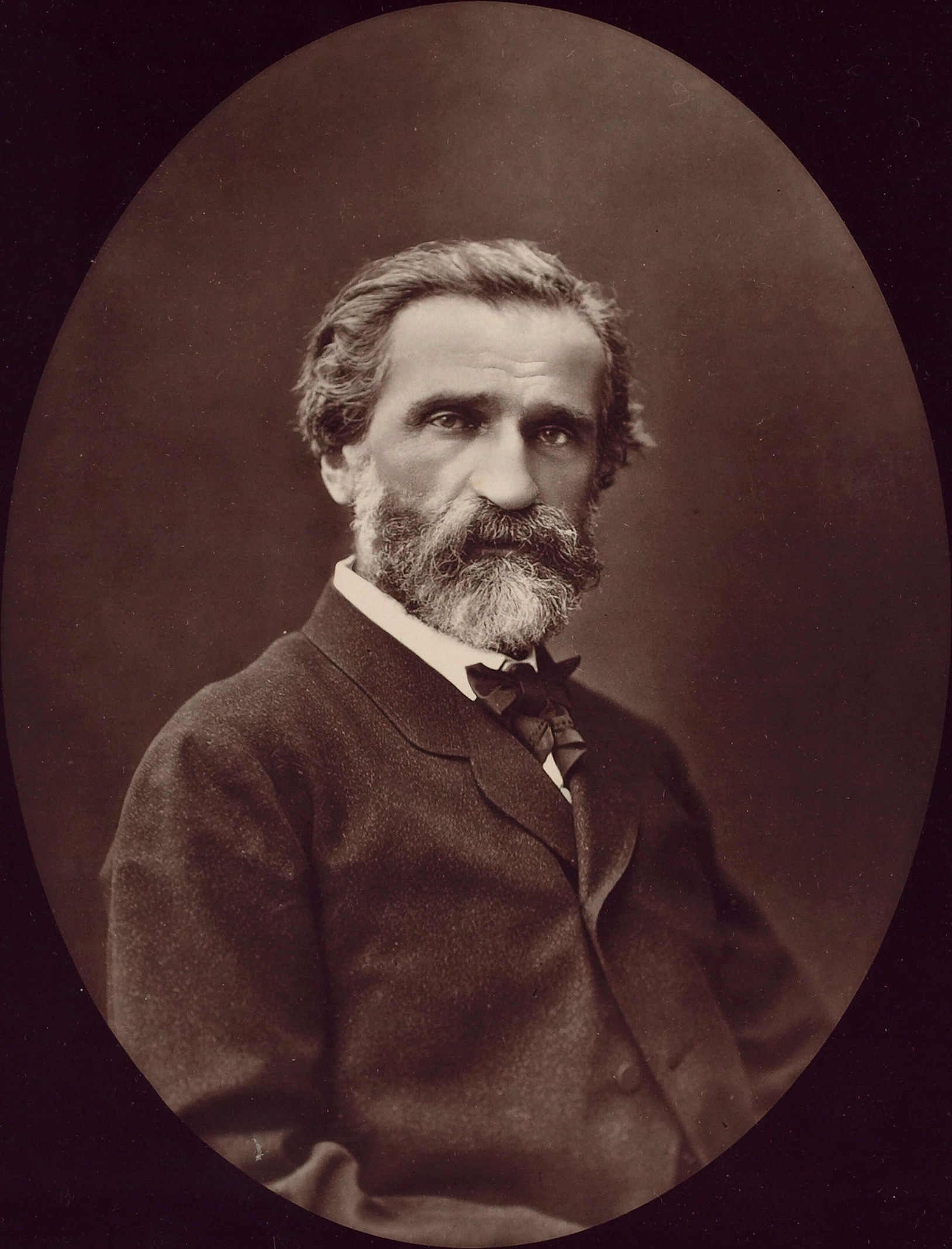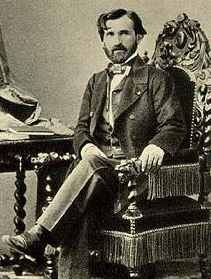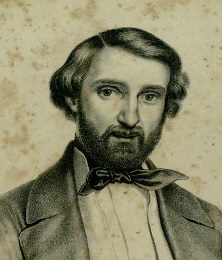|
Eugenio Fernandi
Eugenio Fernandi (Pisa, 1922 – 8 August 1991) was an Italian tenor, associated with both lyric and spinto roles. Eugenio Fernandi was born in Pisa and raised in Valperga, metropolitan city of Turin, where he began his vocal studies with Aureliano Pertile. He later entered the opera school at La Scala in Milan, and began appearing there in small roles. His first major role was as Giovanni Battista in Virgilio Mortari's ''La figlia di diavolo'' in 1954, followed by the Duke in ''Rigoletto'' and Pinkerton in ''Madama Butterfly''. He also sang with success at La Fenice in Venice, the Maggio Musicale Fiorentino in Florence, and the Teatro San Carlo in Naples. In 1957, he made his debut at the Vienna State Opera as Cavaradossi in ''Tosca'', later singing La traviata, Alfredo Germont, La bohème, Rodolfo, Un ballo in maschera, Riccardo, and Aida, Radames. He appeared as Don Carlos at the Salzburg Festival, in 1958 and 1960. He joined the Metropolitan Opera as a leading tenor on Februa ... [...More Info...] [...Related Items...] OR: [Wikipedia] [Google] [Baidu] |
Tenor
A tenor is a type of classical music, classical male singing human voice, voice whose vocal range lies between the countertenor and baritone voice types. It is the highest male chest voice type. The tenor's vocal range extends up to C5. The low extreme for tenors is widely defined to be B2, though some roles include an A2 (two As below middle C). At the highest extreme, some tenors can sing up to the second F above middle C (F5). The tenor voice type is generally divided into the ''leggero'' tenor, lyric tenor, spinto tenor, dramatic tenor, heldentenor, and tenor buffo or . History The name "tenor" derives from the Latin word ''wikt:teneo#Latin, tenere'', which means "to hold". As Fallows, Jander, Forbes, Steane, Harris and Waldman note in the "Tenor" article at ''Grove Music Online'': In polyphony between about 1250 and 1500, the [tenor was the] structurally fundamental (or 'holding') voice, vocal or instrumental; by the 15th century it came to signify the male voice that ... [...More Info...] [...Related Items...] OR: [Wikipedia] [Google] [Baidu] |
Don Carlos
''Don Carlos'' is a five-act grand opera composed by Giuseppe Verdi to a French-language libretto by Joseph Méry and Camille du Locle, based on the dramatic play '' Don Carlos, Infant von Spanien'' (''Don Carlos, Infante of Spain'') by Friedrich Schiller. In addition, several incidents, of which the Forest of Fontainebleau scene and ''auto-da-fé'' were the most substantial, were borrowed from Eugène Cormon's 1846 play ''Philippe II, Roi d'Espagne''. The opera is most often performed in Italian translation, usually under the title ''Don Carlo''. The opera's story is based on conflicts in the life of Carlos, Prince of Asturias (1545–1568). Though he was betrothed to Elisabeth of Valois, part of the peace treaty ending the Italian War of 1551–59 between the Houses of Habsburg and Valois demanded that she be married instead to his father Philip II of Spain. It was commissioned and produced by the Théâtre Impérial de l'Opéra ( Paris Opera) and given its premiere at the ... [...More Info...] [...Related Items...] OR: [Wikipedia] [Google] [Baidu] |
Leonie Rysanek
Leopoldine Rysanek (14 November 1926 – 7 March 1998) was an Austrian dramatic soprano. Life Rysanek was born in Vienna and made her operatic debut in 1949 in Innsbruck. In 1951 the Bayreuth Festival reopened and the new leader Wieland Wagner asked her to sing Sieglinde in ''Die Walküre''. He was convinced that her unique, young and beautiful voice, combined with her rare acting abilities, would create a sensation. She became a star overnight, and the role of Sieglinde followed her for the rest of her career. Her final performance was at the Salzburg Festival in August 1996, as Klytämnestra in '' Elektra'' by Richard Strauss. Her Metropolitan Opera debut came in 1959 as Lady Macbeth in Verdi's '' Macbeth'', replacing Maria Callas who had been "fired" from the production. Over her lengthy career, she sang 299 performances of 24 roles there. She starred in productions of Verdi's ''Nabucco'', in the title role of ''Ariadne auf Naxos'' by Richard Strauss, the Empress in ''D ... [...More Info...] [...Related Items...] OR: [Wikipedia] [Google] [Baidu] |
Scipio Colombo
Scipio Colombo (25 May 1910 – 13 April 2002) was an Italian dramatic baritone, and was known for his abilities as a musician and singing-actor. Born in Vicenza, Italy, Colombo first studied philosophy at the University of Padua, before turning to music. He studied in Milan with Giuseppe Venturini and in Rome with Giuseppe de Luca, and made his debut in Alessandria, as Marcello in ''La bohème'', in 1937. Throughout World War II, he sang at most of the major opera houses of Italy, including the Teatro alla Scala. In 1947, he sang there in the Milan premiere of Prokofiev's ''The Love for Three Oranges'', and of Britten's ''Peter Grimes'', and later took part in the world premiere of Poulenc's ''Dialogues des Carmélites'', as the Marquis de la Force, in 1957. He also sang in Mussorgski's ''Khovantchina'', in 1949. He created roles in contemporary Italian works, notably in Dallapiccola's ''Il prigioniero'' (Florence, 1950), and Pizzetti's ''Cagliostro'' (La Scala, 1953). H ... [...More Info...] [...Related Items...] OR: [Wikipedia] [Google] [Baidu] |
Magda Olivero
Magda Olivero (née Maria Maddalena Olivero) (25 March 1910 – 8 September 2014), was an Italian operatic soprano. Her career started in 1932 when she was 22, and spanned five decades, establishing her "as an important link between the era of the verismo composers and the modern opera stage". She has been regarded as "one of the greatest singers of the twentieth century". Life and career Born as Maria Maddalena Olivero in Saluzzo, Italy, she followed complete musical studies (piano, harmony and composition), graduating in piano at the Giuseppe Verdi Conservatory in Turin. She later studied singing outside the Conservatory and made her singing debut in 1932 on radio performing Nino Cattozzo's (1886–1961) oratorio, ''I Misteri Dolorosi''. Landini, Giancarlo Olivero, Maria Maddalena, detta Magda', in ''Dizionario Biografico degli Italiani (2017)''. Olivero performed widely and increasingly successfully until 1941, when she married the industrialist Aldo Busch and retired from t ... [...More Info...] [...Related Items...] OR: [Wikipedia] [Google] [Baidu] |
Tullio Serafin
Tullio Serafin (1 September 18782 February 1968) was an Italian conductor and former Musical Director at La Scala. Biography Tullio Serafin was a leading Italian opera conductor with a long career and a very broad repertoire who revived many 19th-century ''bel canto'' operas by Bellini, Rossini and Donizetti to become staples of 20th-century repertoire. He had an unparalleled reputation as a coach of young opera singers and famously harnessed and developed both Renata Tebaldi's and Maria Callas's considerable talents. Born in Rottanova (Cavarzere), near Venice, and trained in Milan, he played viola in the Orchestra of La Scala, Milan under Arturo Toscanini, later being appointed Assistant Conductor. He took over as Music Director at La Scala when Toscanini left to go to New York, and served 1909–1914, 1917–1918, and returned briefly after the Second World War, 1946 -1947. He joined the conducting staff of the Metropolitan Opera in 1924, and remained for a decade, after w ... [...More Info...] [...Related Items...] OR: [Wikipedia] [Google] [Baidu] |
Elisabeth Schwarzkopf
Dame Olga Maria Elisabeth Friederike Schwarzkopf, (9 December 19153 August 2006) was a German-born Austro-British soprano. She was among the foremost singers of lieder, and is renowned for her performances of Viennese operetta, as well as the operas of Mozart, Wagner and Richard Strauss. After retiring from the stage, she was a voice teacher internationally. She is considered one of the greatest sopranos of the 20th century. Early life Schwarzkopf was born on 9 December 1915 in Jarocin, Jarotschin in the Province of Posen in Prussia, German Empire, Germany (now Poland) to Friedrich Schwarzkopf and his wife, Elisabeth (). Schwarzkopf performed in her first opera in 1928, as Eurydice in a school production of Christoph Willibald Gluck, Gluck's ''Orfeo ed Euridice'' in Magdeburg, Germany. In 1934, Schwarzkopf began her musical studies at the Berlin University of the Arts, Berlin Hochschule für Musik, where her singing tutor, Lula Mysz-Gmeiner, attempted to train her to be a mezzo-s ... [...More Info...] [...Related Items...] OR: [Wikipedia] [Google] [Baidu] |
Maria Callas
Maria Callas . (born Sophie Cecilia Kalos; December 2, 1923 – September 16, 1977) was an American-born Greek soprano who was one of the most renowned and influential opera singers of the 20th century. Many critics praised her ''bel canto'' technique, wide-ranging voice and dramatic interpretations. Her repertoire ranged from classical ''opera seria'' to the ''bel canto'' operas of Gaetano Donizetti, Donizetti, Vincenzo Bellini, Bellini and Gioachino Rossini, Rossini and, further, to the works of Giuseppe Verdi, Verdi and Giacomo Puccini, Puccini; and, in her early career, to the music dramas of Richard Wagner, Wagner. Her musical and dramatic talents led to her being hailed as ''La Divina'' ("the Divine one"). Born in Manhattan, New York City, to Greek immigrant parents, she was raised by an overbearing mother who had wanted a son. Maria received her musical education in Greece at age 13 and later established her career in Italy. Forced to deal with the exigencies of 194 ... [...More Info...] [...Related Items...] OR: [Wikipedia] [Google] [Baidu] |
Turandot
''Turandot'' (; see below) is an opera in three acts by Giacomo Puccini, posthumously completed by Franco Alfano in 1926, and set to a libretto in Italian by Giuseppe Adami and Renato Simoni. ''Turandot'' best-known aria is "Nessun dorma", which became globally popular in the 1990s following Luciano Pavarotti's performance of it for the 1990 FIFA World Cup. Though Puccini first became interested in the subject matter when reading Friedrich Schiller's 1801 adaptation,. ''Freely translated from Schiller by Sabilla Novello:'' . he based his work more closely on the earlier play ''Turandot'' (1762) by Count Carlo Gozzi. The original story is one of the seven stories in the epic ''Haft Peykar''—a work by twelfth-century Persian poet Nizami ( 1141–1209). Nizami aligned his seven stories with the seven days of the week, the seven colors, and the seven planets known in his era. This particular narrative is the story of Tuesday, as told to the king of Iran, Bahram V (), by his c ... [...More Info...] [...Related Items...] OR: [Wikipedia] [Google] [Baidu] |
I Vespri Siciliani
''I vespri siciliani'' (; ''The Sicilian Vespers'') is a five-act Italian opera originally written in French for the Paris Opéra by the Italian romantic composer Giuseppe Verdi and translated into Italian shortly after its premiere in June 1855. Under its original title, ''Les vêpres siciliennes'', the libretto was prepared by Eugène Scribe and Charles Duveyrier from their work ''Le duc d'Albe'', which was written in 1838 and offered to Halévy and Donizetti before Verdi agreed to set it to music in 1854.Everist, p. 12 The story is loosely based on a historical event, the Sicilian Vespers of 1282, using material drawn from the medieval Sicilian tract '' Lu rebellamentu di Sichilia''. After its June 1855 Paris premiere, an Italian libretto was quickly prepared using a new title because Verdi realized that it would have been impossible to place the story in Sicily. Based on Scribe's suggestions for changing the location,Budden, pp. 238–240 it became Portugal in 1640 while u ... [...More Info...] [...Related Items...] OR: [Wikipedia] [Google] [Baidu] |
Nabucco
''Nabucco'' (, short for Nabucodonosor ; en, " Nebuchadnezzar") is an Italian-language opera in four acts composed in 1841 by Giuseppe Verdi to an Italian libretto by Temistocle Solera. The libretto is based on the biblical books of 2 Kings, Jeremiah, Lamentations and Daniel and the 1836 play by Auguste Anicet-Bourgeois and Francis Cornu. However, Antonio Cortese's ballet adaptation of the play (with its necessary simplifications), given at La Scala in 1836, was a more important source for Solera than the play itself. Under its original name of ''Nabucodonosor'', the opera was first performed at La Scala in Milan on 9 March 1842. ''Nabucco'' is the opera that is considered to have permanently established Verdi's reputation as a composer. He commented that "this is the opera with which my artistic career really begins. And though I had many difficulties to fight against, it is certain that ''Nabucco'' was born under a lucky star." The opera follows the plight of the Jews as t ... [...More Info...] [...Related Items...] OR: [Wikipedia] [Google] [Baidu] |
La Gioconda (opera)
''La Gioconda'' is an opera in four acts by Amilcare Ponchielli set to an Italian libretto by Arrigo Boito (as Tobia Gorrio), based on '' Angelo, Tyrant of Padua'', a 1835 play in prose by Victor Hugo (the same source Gaetano Rossi had used for his libretto for Mercadante's '' Il giuramento'' in 1837). First performed in 1876, ''La Gioconda'' was a major success for Ponchielli, as well as the most successful new Italian opera between Verdi's ''Aida'' (1871) and ''Otello'' (1887). It is also a famous example of the Italian genre of ''Grande opera'', the equivalent of French '' Grand-Opéra''. Ponchielli revised the work twice; the third and final version (that is used to this day) was first performed in 1880. There are several complete recordings of the opera, and it is regularly performed, especially in Italy. It is one of only a few operas that features a principal role for each of the six major voice types. The opera also includes the famous ballet ''Dance of the Hours'', oft ... [...More Info...] [...Related Items...] OR: [Wikipedia] [Google] [Baidu] |

.jpg)

.jpg)



